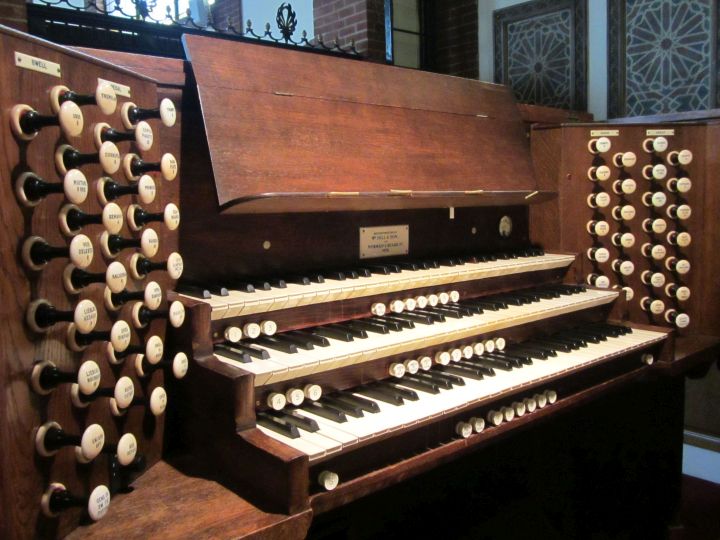History of the organ

The first organ in the present building was installed in 1926 by the Aeolian Company of New Jersey, incorporating pipework from the organ in the original church (now the Ruskin Hall). The Aeolian Company was best known for its automatic ‘player organs’, which were built mainly for private houses and played arrangements of popular pieces recorded on paper rolls by famous artists of the time. Many of these organs also had consoles, enabling them to be played in the normal way.
The contract was awarded to Aeolian on the insistence of the benefactor of the new church building, Sir William Mallinson, who knew the owner of the Aeolian Company. One legacy of the Aeolian approach is the choir Clarinet stop, which is of harmonium-style free reed design.
All pipework was originally housed in one chamber on the west side of the building. In 1932 the organ was rebuilt and extended by Hill, Norman & Beard and the swell was moved to a new matching chamber above the console on the east side. Apart from the installation of new blowers in 1986, the organ remained unchanged until the 1990s, by when further work had become essential if the organ were not to become unplayable.
Modernisation was carried out in 1998 by David Wells Organ Builders of Liverpool. The console was refurbished and electronic transmission installed. New shutter controls were fitted to the swell and choir boxes and obsolete slider machines for the stops were replaced. Two new stops, the Twelfth and the Mixture were added to the great; the Trumpet was repositioned on a separate chest and made available on both choir and pedal; and the Trumpet was also made available as the great 4’ Clarion.
The organ is listed on the National Pipe Organ Register. Index number N13417 gives the specification of the 1926 instrument and the current specification is listed under index number K00638.
